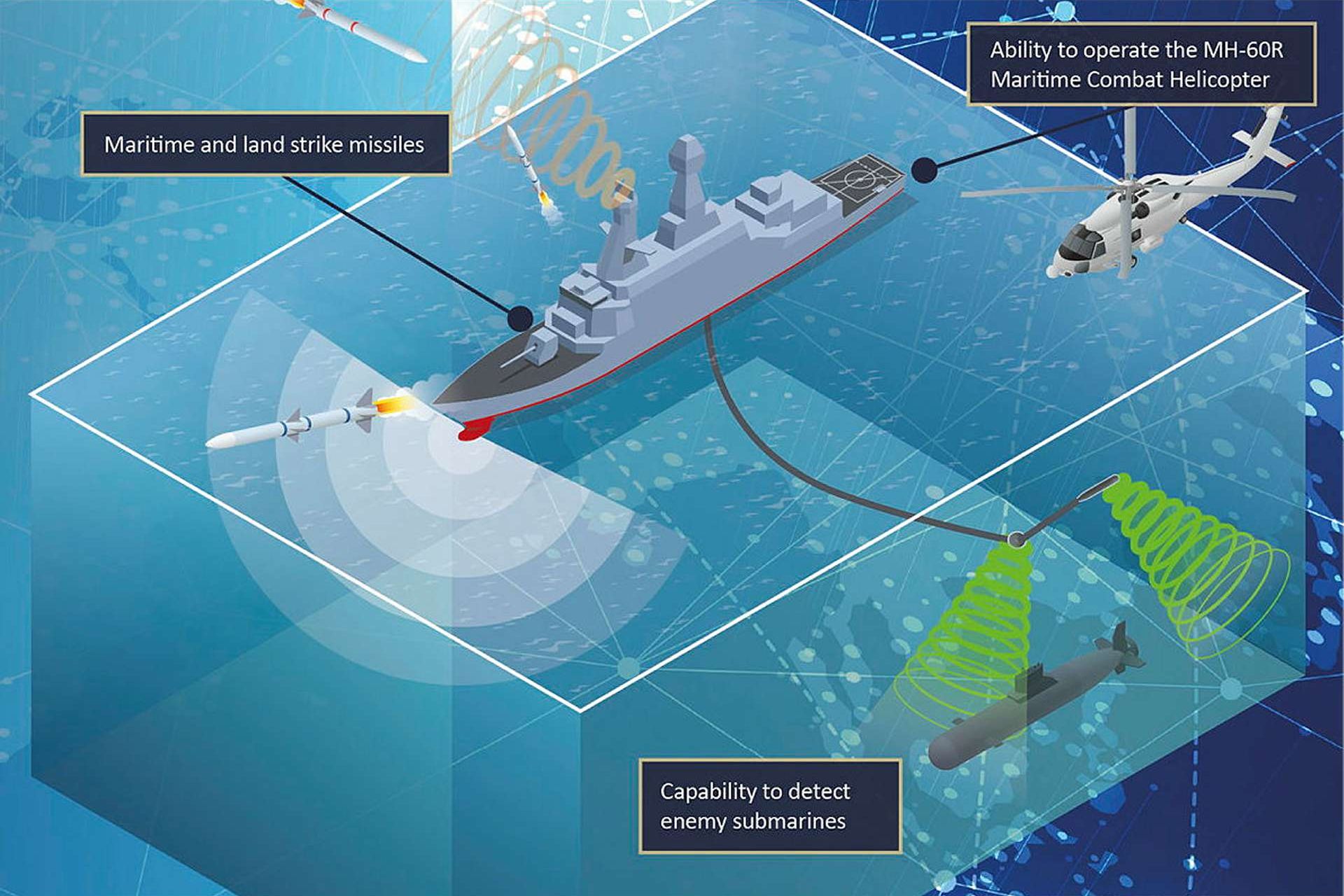Breaking News
Australia’s Frigate Program Reaches Milestone with Shipbuilder Decision.
According to information published by the Australian DoD on November 25, 2024, the Albanese Government has reached a significant milestone in its efforts to modernize Australia’s naval fleet, selecting Mitsubishi Heavy Industries (MHI) and Thyssenkrupp Marine Systems (TKMS) to develop designs for the nation’s next-generation general purpose frigates.
Follow Army Recognition on Google News at this link

Artist rendering of the future Royal Australian Navy's frigate. (Picture source: Australian DoD)
The general purpose frigate program is a centerpiece of a broader $55 billion investment in naval modernization over the next decade, with $10 billion specifically allocated to this initiative. These new frigates will replace the Anzac Class vessels and are designed to strengthen Australia’s capabilities in undersea warfare, local air defense, and the protection of vital maritime trade routes and northern approaches.
Following a rigorous evaluation process, the government identified the Mogami-class, proposed by MHI, and the MEKO A-200, designed by TKMS, as the best options to meet the Navy’s operational requirements. Both designs reflect advanced technological features and operational flexibility, making them well-suited to the demands of modern naval warfare. This selection highlights the sophistication and capability of defense industries from Germany, Japan, South Korea, and Spain, all of which presented exceptional proposals during the competitive process.
The program will see the first three frigates constructed overseas to ensure timely delivery, with subsequent vessels built locally at the Henderson Defence Precinct in Western Australia. This approach balances the need for rapid capability enhancement with the government’s objective of fostering a robust domestic defense industry. The Henderson precinct is poised to become a critical hub for naval innovation, with billions of dollars in planned defense investments expected to create approximately 10,000 high-skilled jobs in the region over the next two decades.
MEKO A-200 vs MOGAMI
The Mogami-class frigate, developed by Japan, and the MEKO A-200 frigate, designed by Germany's ThyssenKrupp Marine Systems, represent modern naval engineering tailored to multi-role operations. The Mogami-class is larger, measuring 142 meters in length with a beam of 17 meters and a displacement of 4,880 tons, compared to the MEKO A-200’s 121 meters length, 16 meters beam, and 3,700 tons displacement. This size difference reflects their differing operational priorities, with the Mogami-class emphasizing enhanced onboard capabilities.
In propulsion, both vessels use a Combined Diesel and Gas turbine (CODAG) system. The Mogami-class reaches speeds exceeding 30 knots with a range of approximately 5,500 nautical miles, while the MEKO A-200 achieves 27 knots with a longer range of around 7,500 nautical miles at economic speeds. The MEKO A-200 also employs an innovative CODAG-WARP system, enhancing its maneuverability.
Armament configurations highlight their combat capabilities. The Mogami-class features a 127mm main gun, a 32-cell Mk 41 Vertical Launch System (VLS), SeaRAM CIWS, and eight anti-ship missile launchers, along with two triple 324mm torpedo tubes. The MEKO A-200, on the other hand, typically mounts a 76mm or 127mm main gun, up to a 16-cell VLS, anti-ship missiles, CIWS options like the Oerlikon Millennium, and similar torpedo tube arrangements.
Their sensor suites reflect modern warfare requirements. The Mogami-class integrates phased array radar and a sophisticated combat management system developed by Mitsubishi Heavy Industries, complemented by bow-mounted and towed sonar for anti-submarine warfare. The MEKO A-200 offers modularity in its radar and CMS, with options such as Thales or Saab systems.
Crew efficiency is a focus for both classes. The Mogami-class operates with around 90 personnel, benefiting from advanced automation to reduce manpower needs. The MEKO A-200 accommodates approximately 120 crew members and similarly emphasizes automation to streamline operations.


























